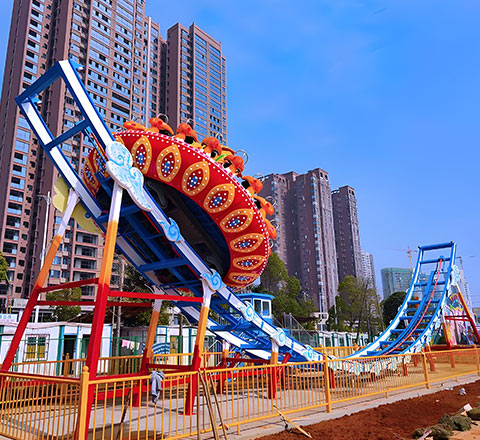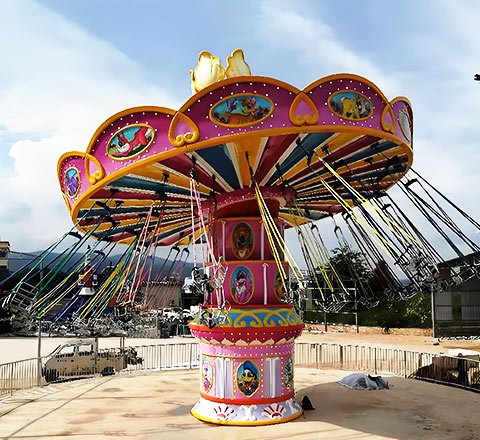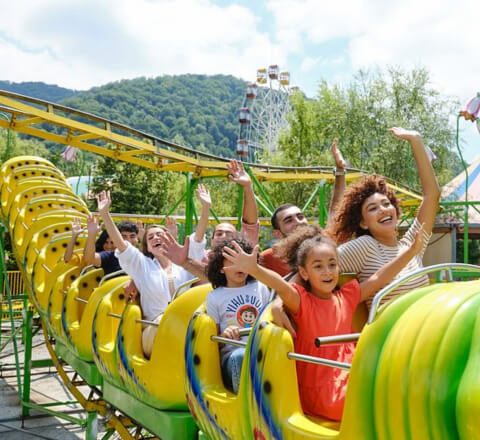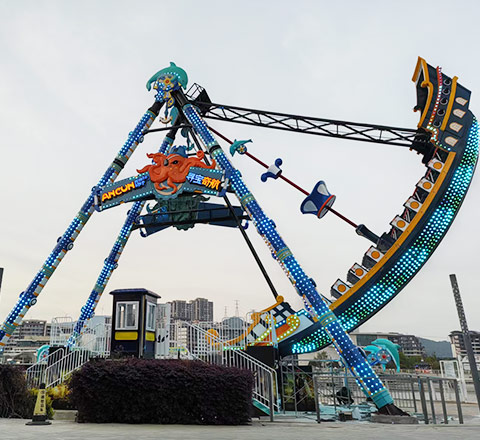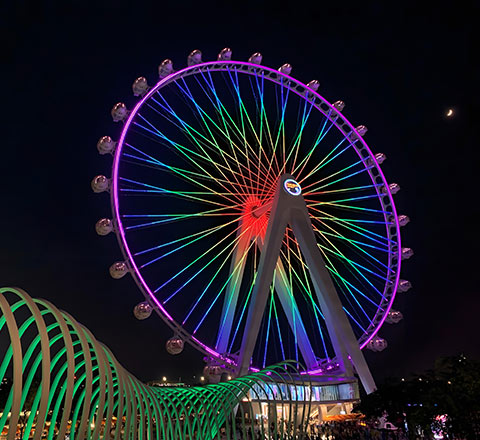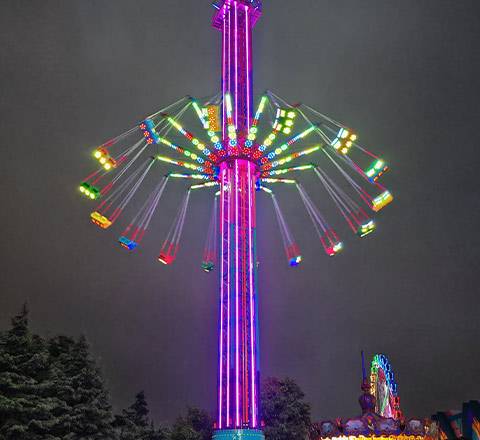Most of us have experienced the rush of a roller coaster, but many still worry: Is it really safe?
In fact, modern roller coasters are far safer than most people imagine—every step, from design to ride, is built on science and strict engineering.
Let’s take a look at how a roller coaster works, why they’re so thrilling, and most importantly, why you can trust their safety.
The History: From Russian Mountains to Modern Marvels
Roller coasters actually began centuries ago, ranking as one of the 10 classic amusement park rides that have stood the test of time.
- In 15th-century Russia, people rode sledges down icy wooden slopes for fun—this “Russian Mountain” idea spread across Europe.
- In 19th-century France, the wooden “roller coaster” was born, using planks instead of ice, so the thrill was available year-round.
- Across the ocean, an American innovator noticed coal miners loved riding their mine carts down tracks for fun and built the first closed-track “return railway”—the earliest modern roller coaster.
From these early days, the main goal was always fun and safety. Today’s roller coasters look wild, but every part is carefully planned by engineers. (For more information: Fun Facts About Roller Coasters: History, Records, and Science)
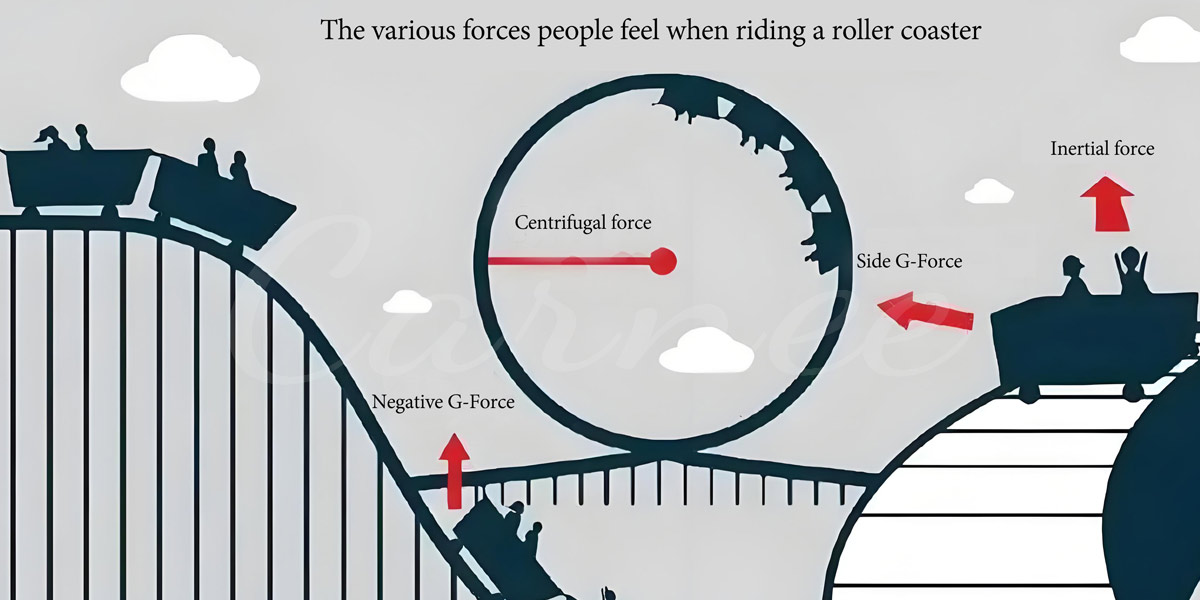
How a Roller Coaster Actually Works
1. The Climb: Building Up Energy
Roller coasters don’t use an engine to move.
Instead, a chain lift (or a modern launch system) pulls the train up the highest hill. This climb builds up “potential energy”—think of it as a loaded spring, ready to burst.
- A chain and motor pull the train upward.
- Underneath, a “chain hook” attaches to the chain.
- Anti-rollback devices (ratchets and hooks) ensure the train can’t slide back, even if the chain fails. This is a major safety design!
2. The Drop: Gravity Takes Over
At the very top, the train is released.
Gravity pulls it down, turning stored energy into speed (kinetic energy). That first drop is what gives the ride its famous rush—and the energy to finish the course.
3. Twists, Turns, and Loops: Locked to the Track
Ever wonder why trains don’t fly off during loops and sharp turns?
Three sets of wheels:
- The top wheels ride on the rail
- Side wheels keep the train centred
- Bottom wheels (upstop wheels) hold the train down, preventing it from lifting off even at high speed
Even in the craziest loop, these wheels keep the train tightly attached to the track, a key feature of modern safety engineering.
4. Safe Stopping: Brakes and Smart Control
When the ride ends, braking systems smoothly bring the train to a halt.
Early coasters used hand brakes, but today, most use:
- Friction brakes: Pads grip the train and slow it down
- Magnetic brakes: Use magnets for smooth, touch-free stopping
Brakes are located at the end and sometimes in the middle for extra control.
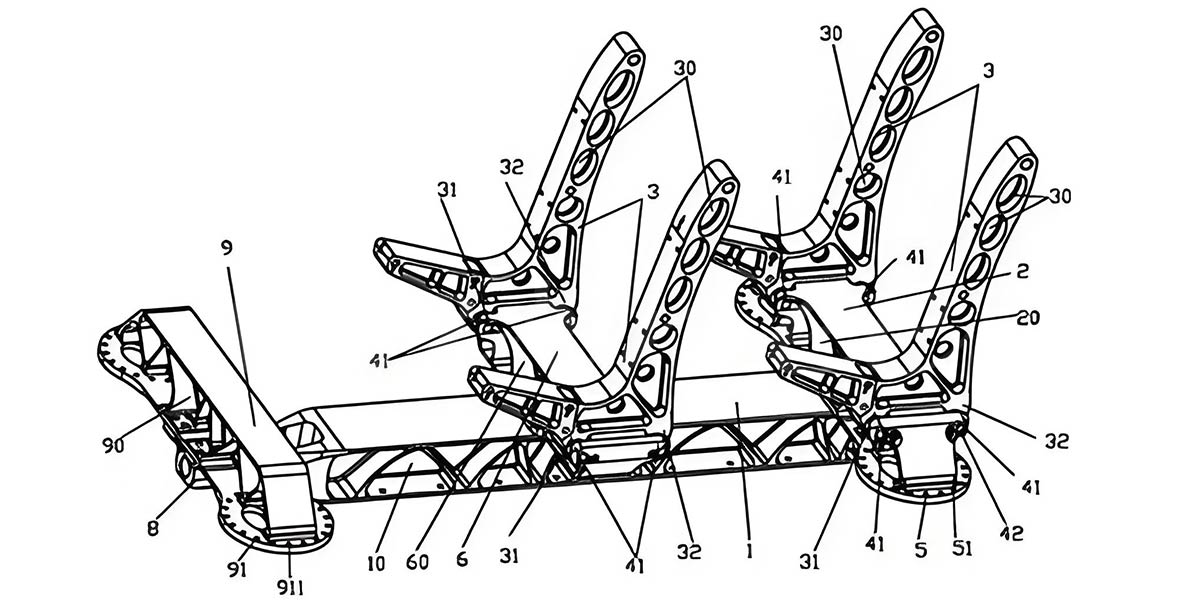
5. Rider Safety: Harnesses, Sensors, and More
Keeping riders secure is always priority one.
- Safety bars and harnesses: Lock every rider in place
- Double locking pins: Even if one fails, the bar stays secure
- Real-time sensors and controls: Monitor every train, every moment
- Sectional “blocks”: Only one train per section to avoid collisions
Multiple fail-safes mean that, even in rare mechanical trouble, your safety is always protected.
Roller Coasters Evolve: From Wood to Steel to High-Tech
- Linked cars: Modern coasters connect multiple cars with flexible joints, creating smoother, longer trains.
- Steel tracks: Replacing wood allows for taller hills, sharper turns, and exciting new designs—including full loops.
- Special effects: Designers now add tunnels, sudden drops, music, lights, and fog to heighten the thrill.
All this is possible only because safety standards and engineering have advanced so far.
Main Roller Coaster Safety Features at a Glance
| Feature | Purpose |
| Anti-rollback ratchet | Keep the train secure on track |
| Upstop/side/top wheels | Keeps train secure on track |
| Braking systems | Smooth, reliable stops |
| Dual-lock harnesses | Rider held tight at all times |
| Sensors & controls | Real-time monitoring, quick stop |
| Sectioned blocks | No risk of train collision |
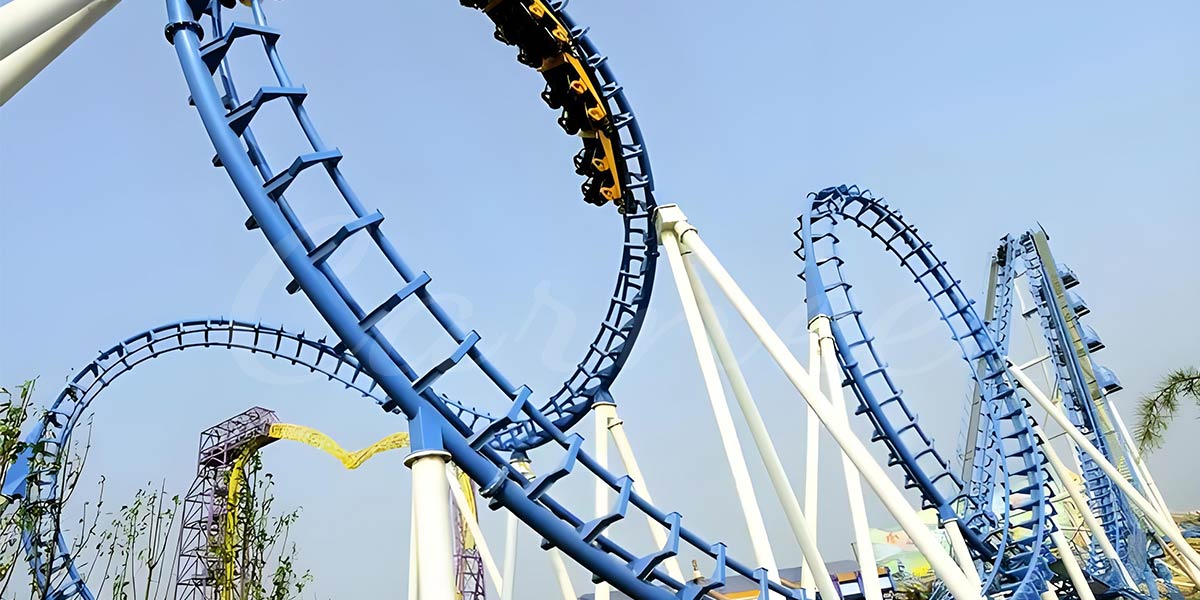
Why You Can Trust Modern Roller Coasters
Every part, from the first bolt to the final brake, is designed for maximum safety, with multiple backups for every system.
As a leading roller coaster manufacturer with over 20 years in the industry, we follow (and help set) international safety standards for every ride we build.
Conclusion: Enjoy the Thrill—We Handle the Safety
The next time you see a roller coaster, remember:
It’s not just a wild ride. It’s the result of centuries of design, careful engineering, and constant safety improvements.
Understanding how a roller coaster works can give you even more confidence to enjoy the experience, knowing every twist and drop is backed by science and safety.
Sit back, buckle up, and trust the ride—because true excitement always starts with smart engineering.
You may also like: Wooden Roller Coaster vs Steel Roller Coaster: Which One Wins?, How Does The Pirate Ship Ride Work?

